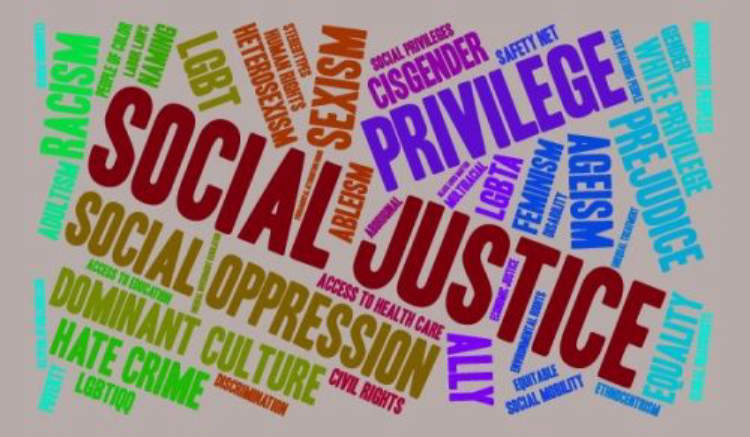Exploring US Higher Education and Social Justice Advocacy is a bold endeavor for any American university. It is a complex topic, taking into account the history of the country and its current socio-economic climate. This article will analyze how US higher education, as a whole, is responding to social justice challenges, while considering the implications of advancing access to education for disadvantaged communities.
The discussion will draw on data to understand trends and explore potential solutions to the problems of unequal access and representation within the US system. Additionally, the article will analyze several examples of programs and initiatives by universities, researchers, and social justice advocacy organizations that have been implemented to advance greater equality in higher education.
What is US Higher Education?
US Higher Education is the term used to describe an advanced stage of formal learning on a college or university level. Depending on the institution, this can include post-secondary level programs such as Associate Degrees, Bachelors, Masters or even Doctoral degrees. Depending on the institution, the student may be able to obtain qualifications and degrees from many different fields and majors. US Higher Education institutions may also provide unique experiences such as internships, co-curricular activities, opportunities to study abroad, and more.
In addition, US Higher Education institutions may offer success and career opportunities for students. Some of the ways in which students may obtain these advantages include attending lectures, workshops, seminars, or taking part in extracurricular activities. Moreover, Higher Education institutions may also help students to obtain qualifications and certifications in specific areas. These may include nursing, computer science, engineering, social work, and more.
Moreover, US Higher Education institutions also play a major role in social justice. The primary mission of Higher Education is to promote equal opportunities for all students and those from underprivileged backgrounds. In addition, Higher Education institutions also provide a platform for marginalized groups to speak up and pursue their goals and dreams. This involves empowering those at risk of marginalization and advocating for equity and respect for everyone.
Social Justice Advocacy Challenges in US Higher Education

Social justice advocacy is the engagement in activities which promote fairness, access and equality in our educational systems, especially in the United States. Despite the progress made in recent years, United States higher education still faces numerous barriers to and challenges that hinder social justice advocacy. From the curriculum diversity to financial aid, here are some common challenges to social justice advocacy in US higher education.
Curriculum Diversity:
In many ways, curricula in higher education dictate the intellectual communities that form on campus. Unaddressed issues of inequity can be revealed by looking at what is being taught, who is teaching it, and who is left out of the conversation. In regards to US higher education, many institutions fail to include or actively exclude voices from seldom-heard and marginalized communities, including those based on race, gender, sexuality and religion.
Lack of Financial Aid:
The availability of financial aid is crucial for students who come from low-income backgrounds, as it is often the only way for them to pursue higher education. Unfortunately, many institutions have failed to allocate sufficient resources to provide adequate financial aid, making higher education inaccessible for many students. As a result, students are often forced to abandon their education or resort to taking out high-interest loans.
Political Climate:
The current political climate in the United States often hinders social justice advocacy by enforcing policies that prioritize the interests of those already in a position of power. With many members of the US government opposed to social justice initiatives, it is difficult for advocates to implement change through legislation. This has led to a decline in public funding for social justice initiatives as well as limited access to resources for advocacy organizations.
Student Resistance:
Though student activists have long been committed to advocating for social justice, they often face resistance from both faculty and administrators. Students may be discouraged from advocating for change by university administrators who believe such activities will harm the reputation of the institution and disrupt the status quo. This reluctance to support such initiatives makes it difficult for students to truly affect the necessary changes.
The challenges of social justice advocacy in US higher education are indeed numerous and difficult to address. Nevertheless, there are also many opportunities for advocates to create meaningful change in our education systems. With the proper resources, dedication, and collaboration, these obstacles can be overcome.
Exploring Strategies for Social Justice Advocacy
Social justice advocacy is a powerful tool for social change. It addresses inequal access to resources or basic rights based on gender, race, class, or other marginalized identities. As a term, social justice advocacy often emerged in the context of civil rights or revolutionary movements – however, its implications can be applied to nearly any issue that intersects with power dynamics. For instance, in the United States, social justice is currently being applied to higher education, as the need for equal access and representation is becoming exceedingly salient due to its potential to shape the future of the country.
In exploring social justice advocacy for higher education in the United States, it is helpful to evaluate current challenges in the system and formulating well-thought-out strategies to address them. Some of the charge issues in the space include difficulties for under-represented populations to access higher education, such as students of color, immigrants, and those from low-income backgrounds; the need to acknowledge and end racism in all its forms within higher education; and fighting for education reform that honors the various diverse backgrounds of students.
Strategies for Social Justice Advocacy
There are a number of strategies that can be used to advocate for social justice within higher education. These include:
- Acknowledge existing systematic inequities and develop structures to address them
- Raise public awareness of the issue through campaigns and events
- Advocating with both educational and governmental decision-makers
- Monitor discriminatory policies or practices within the educational system
- Create student-led initiatives for policy and practice changes
- Develop intersectional initiatives that embrace diversity
- Call for curricula revision to emphasize diversity, equity, and inclusion
- Engage researchers and academics to study issues related to social justice
- Encourage dialogue and collaboration across different schools and departments
- Lobby local, state, and national governments for positive change
These strategies can be used to create a more equitable environment in higher education, and foster a more inclusive atmosphere where all students – no matter their background – can learn and grow without feeling discriminated against or neglected.
Conclusion
In conclusion, exploring US higher education and social justice advocacy reveals the complexity of the system beyond college and university degrees. A great deal of work needs to be done in order for students and educators to learn how to make equal opportunities available to everyone. It is also important to help people understand the different structures and institutions in order to increase the chances of having a successful career and life.
Creating a supportive learning environment and understanding social justice issues within a higher education context is essential for making the most of the educational system. By understanding the implications of the system and learning how to advocate for social justice, higher education institutions can promote an environment that is beneficial to everyone, regardless of gender, race, and socioeconomic status.




